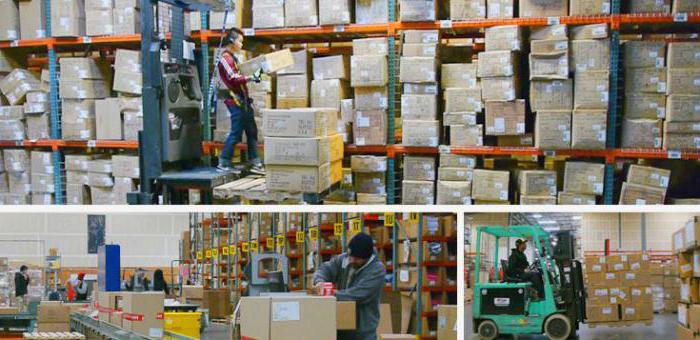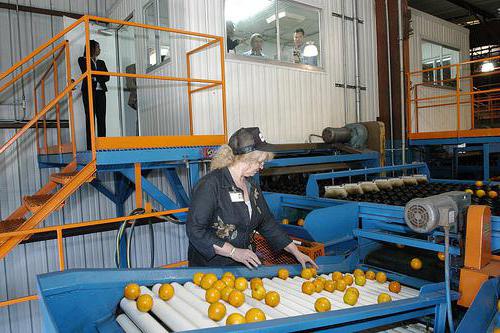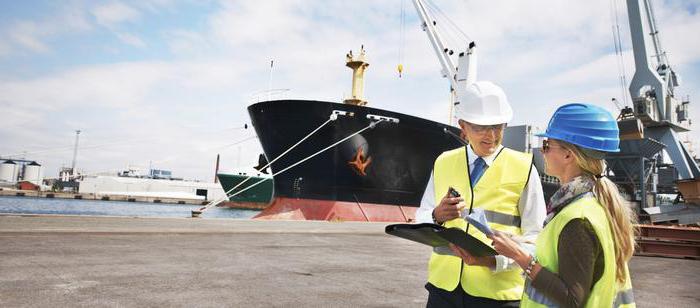The customs procedure for processing outside the customs territory involves the export of objects outside the control zone for the relevant operations in the specified period with subsequent import back. At the same time, a full conditional exemption from duties is provided. In addition, non-tariff regulatory measures do not apply. Let us further consider in detail the features of the customs procedure for processing outside the customs territory. 
general characteristics
As mentioned above, the customs procedure for processing outside the customs territory implies conditional (full) exemption from import duties. Restrictions and prohibitions of an economic nature that are established in accordance with the provisions of the legislation of the Russian Federation regulating foreign trade activities will not apply to imported objects. When products are exported outside the control zone, there is no exemption from payment, compensation or refund of internal taxes.
Processing conditions outside the customs territory
They are regulated by Art. 253 shopping mall. The customs procedure for processing goods outside the customs territory is carried out when:
- Providing a document issued by the competent authority of a member country of the CU. The paper must contain the information provided for in Art. 257 shopping mall. If processing outside the customs territory involves repair, then instead of the specified document it is allowed to submit a declaration.
- Opportunities for identifying vehicle products in processed products by regulatory authorities. An exception is cases of replacement of the latter with foreign products in accordance with the provisions of Art. 256 shopping mall.

Important point
The processing regime outside the customs territory applies to products with the status of being in free circulation. Temporary export from the control territory is allowed with the subsequent import of products for which privileges are provided for the deduction of duties and taxes in accordance with the provisions of the laws of the CU member states. This assumption is valid if processing outside the customs territory involves repair.
Identification
Identification of products in their processed products is carried out in several ways. They should be selected based on the nature of the product and the operations involved in its processing:
- The applicant or authorized person affixing stamps, seals, digital and other markings.
- Description of products, their image in scale, photographing.
- Comparison of the results of the study of previously taken samples or samples of exported goods and imported products of their processing.
- Documentary evidence of the processing of exported products of the manufacturer.
- Putting down serial numbers and other marking means.
- Other identification methods involving the use of modern technology.

The fourth and sixth methods are used only if processing is carried out outside the customs territory.
Customs payments
For imported products, the following rules for paying taxes and duties apply:
- Full exemption is provided for products exported for repairs. For goods released earlier for free circulation within the customs territory, benefits are not provided.This rule applies if a defect has been taken into account and a repair has been performed to eliminate it.
- Partial exemption. It applies in all other cases.
The specifics of taxes and duties on import
The procedure for paying these amounts has a number of features. After processing has been carried out outside the customs territory, and the products are imported back:
1. The excise tax shall be paid in full if the products are excisable.
2. The amount of duties payable shall be calculated as the difference between the import duty applied to the exported objects and the amount of the import payment that would be charged for the exported material values if free circulation were supposed to be issued. This rule applies if special duty rates apply to products and processing outside the customs territory does not involve repair. The amount can also be calculated on the basis of the cost of operations. In the absence of documentary evidence, it is determined as the difference between the prices of products after processing and exported products.

3. The amount of VAT payable is calculated in accordance with the cost of operations. In the absence of supporting documentation, it is defined as the difference between the customs prices of processed products that are imported into the territory of the Customs Union and goods exported to carry out appropriate actions.
Duration of operations
The terms of processing outside the customs territory are set in accordance with the duration of the prescribed actions and the time it takes to transport the products. At the request of the interested entity that has received permission to carry out appropriate operations, the initially determined period may be extended. At the same time, the period for processing goods outside the customs territory cannot be more than 2 years. This rule is established in Art. 256 shopping mall.
Period extension
It is carried out at the request of the interested entity. This provision is provided for in the order of the Federal Customs Service No. 536 dated April 25, 2007. An application is also provided in case of replacement of products with foreign products, if processing outside the customs territory involved repair. The document is compiled in writing at random. In the application, the person concerned indicates the reasons for the extension of the originally established period. 
Statement
Processing of goods outside the customs territory is carried out if there is a corresponding document issued by the control service. The rules for applying for permission to entities are set out in order No. 267 of March 14, 2008. An interested person submits a written application to the FCS unit of the region where processing outside the customs territory is supposed. It should contain information about:
- Names of declarant, KPP, TIN, PSRN, location address, contacts (phone, fax), currency and account numbers with the banking organizations in which they were opened, and MFIs for each of them.
- Products exported outside the control zone. Here, the product names, cost (in rubles), the code for the foreign trade activities approved by the Customs Union, the control service that will carry out the subsequent clearance, the quantity are indicated. The same section provides the date of conclusion, contract number, and the name of the foreign company with which it is signed. Under this contract, processing outside the customs territory will be carried out.
- Exit rates.
- Processing products (name, quantity, HS code, approved by the CU, cost (in rubles), division of the FCS, which will execute the registration).
- Methods of product identification in the resulting products.
- Operations that include processing outside the customs territory, methods for their implementation and duration.
- The period the products are outside the control zone.
 The entity applies documents to the application confirming the above data. After reviewing all submitted papers, the control service makes a decision. If it is positive, the permit is made in 2 copies, one is issued to the declarant.
The entity applies documents to the application confirming the above data. After reviewing all submitted papers, the control service makes a decision. If it is positive, the permit is made in 2 copies, one is issued to the declarant.
Another way to get permission
It is allowed to use a declaration instead of a statement, drawn up in the manner prescribed by the decision of the Special Commission of the CU. This is permitted if:
- Products are placed under the processing procedure to carry out repairs, including those carried out on a reimbursable basis.
- The cost of production is not more than 500 thousand rubles.
When these conditions are met, the period for consideration of documentation is reduced to the period of decision-making established in the TC TC regarding the release of goods - up to 2 days. When importing products, they must be declared by the control service that issued the permit for the export of products.
Denial of application
customs Department may not issue the entity permission to process products outside the control zone. Refusal is allowed in the following cases:
- In case of failure to provide information on the alleged operations defined in the TC.
- If the conditions of the procedure are not followed.
- When the control service takes a decision on refusal to agree on the declared output standards and duration of operations.
The declarant shall be notified of the grounds under which the customs authority will not issue him permission. 
Operations
Their types are defined in Art. 254 shopping mall. Operations for processing products outside the customs territory include:
- Manufacturing of products, including fitting, assembly, installation, disassembly.
- Processing / processing of goods in which their individual characteristics are lost.
- Repair of products, including their restoration, as well as the replacement of components.
Product Replacement
It is carried out in accordance with Art. 259 TC. Processing products may be replaced by foreign goods if:
- Operations involve repairs.
- Verification services do not identify products.
Replacement is carried out on goods that, in their technical characteristics and quality, coincide with the above products. If this operation was allowed, the import of foreign products is allowed before export outside the control zone. The replacement procedure is established in the laws of the CU member countries.
Exit rates
They are regulated by Art. 258 shopping mall. The output rate refers to the percentage or number of products that are formed as a result of the relevant operations with a certain volume of exported goods. They are determined by the declarant himself in agreement with the control service. In this case, the actual conditions in which the processing is carried out are taken into account. If operations are carried out with products whose characteristics are practically unchanged, in accordance with clearly established technical requirements and facilitate the receipt of products of constant quality, standard norms can be established by authorized bodies of the CU member countries.
In the Russian Federation, government decree No. 744 of December 9, 2003 is currently in force. In accordance with it, authorized executive bodies have been identified, whose competence is to determine standard indicators of product output for customs purposes. At the same time, the FCS letter of November 15, 2004 also applies. In accordance with it, until the authorized bodies establish standard standards for certain categories of products, customs services should be guided by paragraphs 1 and 2 of Articles 202 and 178 of the Customs Code, that is, apply the general rules.
Completion of operations
Processing ends before the deadline by placing the products on the re-import procedure or release into internal circulation according to the rules established in the Labor Code.The action of the considered scheme can be completed before the expiration of the specified period by sending the products for re-import or export. This applies to products that have not undergone processing operations. The action of the scheme cannot be completed by export, if the products are subject to return in the legislation of the member countries of the CU.
